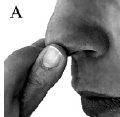Status: Sociological question
Tom Bell, in the Agoraphilia blog, asks an interesting question. Why does children's fiction promote credulity as a virtue?
Children's fiction employs this trope so often that it fits a formula. A wise character tries to convince the protagonist that something wonderful will happen if only he or she will earnestly believe an improbability. Consider, for instance, how Yoda tells Luke to cast aside all doubt if he wants to levitate his x-wing from the swamps of Dagobah. "Do, or do not. There is no try," Yoda explains. Following the usual script, Luke resists, courting disaster, before he finally embraces faith and wins its rewards.
Bell notes an obvious explanation -- that religious and political leaders would like to see young people raised to believe without question. But Bell then suggests an alternative explanation. Maybe it's because children's literature depends upon the suspension of disbelief, and therefore children's authors need to promote gullibility as a virtue.
Looking at the question historically (which, after seven years of grad school is how I tend to approach questions like this), I would say it might have something to do with the sentimentalization of childhood which, in western culture, began to occur during the 18th and 19th centuries. Of course, this just raises the question of why our culture began to sentimentalize childhood. I honestly don't know, but it sure has helped Disney make a lot of money.
Posted By: Alex | Date: Wed Feb 20, 2008 | Permalink | Comments (12)
Category: Literature/Language, Psychology
https://www.museumofhoaxes.com/
~~~~~~~~~~~~~~~~~~~~~~~~~~~~~~~~~~~
Touch Illusions
Status: sensory illusions
A recent paper (available as a pdf file) by Vincent Hayward in Brain Research Bulletin lists more than twenty types of tactile illusions that can be experienced using very simple equipment available in any hardware store. Some of the descriptions of the illusions unfortunately are rather technical, but here's a summary of a few of them:
The Aristotle Illusion: Cross your fingers and touch your nose. You may feel two noses. (It didn't work for me.)

The Comb Illusion: Lay your finger on top of the teeth of a comb. With your other hand, run a pencil back and forth against the teeth. You should feel "the sensation of a raised object moving on the finger when, in fact, since the teeth have a constant length, the skin is sheared but indentation is invariant along the line."
The Curved Plate Illusion: Move a plastic card or match box back and forth across the pad of your finger. It should feel straight. But if you see-saw the object up and down as you move it across your finger, it should feel curved.
(via Developing Intelligence)
Posted By: Alex | Date: Mon Feb 18, 2008 | Permalink | Comments (6)
Category: Science
https://www.museumofhoaxes.com/


